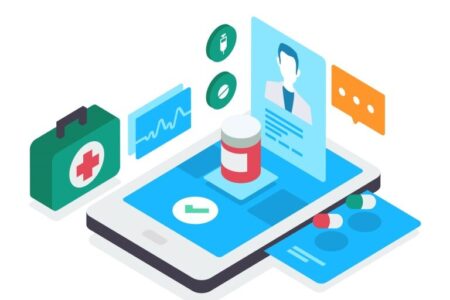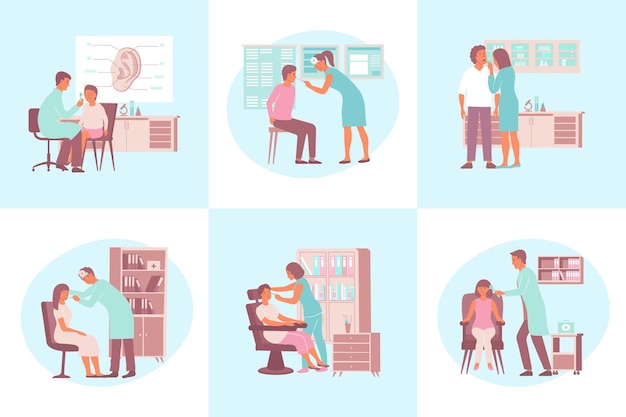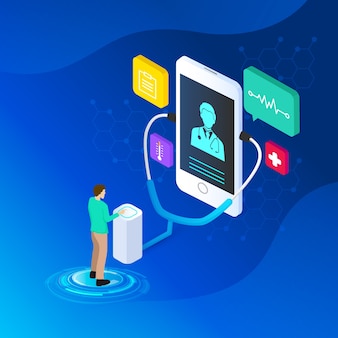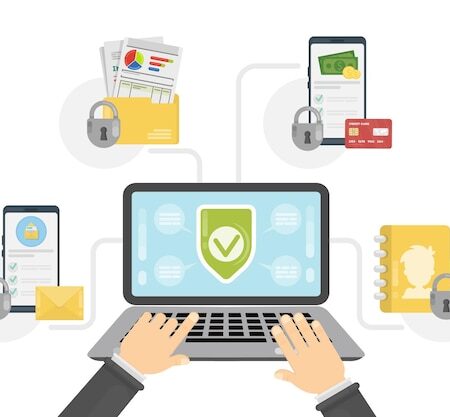The Top 9 RCM Trends in 2023
The year 2022 was economically challenging for hospitals, Healthcare systems, and even mid to large-sized physician offices. Additionally, the long period of hardship brought on by COVID-19, and its inflationary effects also had an influence on Healthcare providers. Also, the declining operating revenue for health systems and a fundamental shift in the workforce, made 2022 much more difficult for the entire Healthcare industry.

RCM leaders are primarily focused on two goals: Protecting Revenue and achieving more with Fewer Resources. Due to the large number of employee separations most of the Healthcare companies are now short on administrative and clinical staff.
We do not see much change in this scenario in 2023 because these patterns will still give headaches to RCM leaders however, if RCM leaders adapt to new trends and opt for new accelerating pace of consolidation, innovation and adoption of new work practices, 2023 can prove to be a supercharged year for them.
Here are The Top 9 RCM Trends impacting Healthcare and the revenue cycle:-
1. Proactive Revenue Strategy

In 2023, Protecting Revenue will be as important to health systems as increasing revenue. This is especially true given the enormous pressure from payers, particularly on the Medicare and Medicaid sides of the house, to ensure that every claim is evaluated and adjudicated properly. Consider that Medicare accounted for 82% of initial claim denials, representing a more than 20% increase over 2021. As a result, health care organizations must have processes and systems in place to defend claims and earn the revenue they deserve for the services they provide. It is critical to have a proactive revenue strategy.
2. Patient Focus

The No Surprises Act, which went into effect in 2021, requires hospitals to post prices for their most common procedures and to provide a patient-friendly tool to assist patients in shopping for common services. A lot has been said about no-surprise billing and financial transparency. Patients expect easy access to information about services rendered, associated fees, the amount to be paid by their insurance company and the out-of-pocket expenses they must bear. We anticipate significant changes in the way healthcare providers interact with patients, such as scheduling changes, price transparency, and flexible payment options. In the patient access and experience space, new solutions and businesses will emerge.
3. Value-Based Care and Wellness

The core principle of value-based care is to shift the emphasis away from volume to value. What exactly is value, and how does one define it? Value-based care cannot rely solely on preventive care to determine value delivered. The most fundamental shift, however, has come from the emergence of wellness chains across the United States. Americans are living healthier lifestyles and are expected to live longer lives, which will result in significant changes in Healthcare demand.
4. Labor Shortage

i. Clinical documentation outsourcing and Innovation: Hospitals and Healthcare systems have begun to outsource clinical documentation services such as virtual clinical assistants and medical scribes with a hope to free up clinicians’ time on clinical documentation by using outsourced/offshore labor.
ii. Nursing Services on a contract basis: Nursing is slowly transitioning to a gig economy job, with many nurses opting to work fixed hours at locations of their choice. Given the demands of nursing jobs, they intend to work only 6-9 months out of the year.
iii. Shortage of experienced personnel: The competition for clinical and administrative talent is expected to heat up in 2023. In 2022, we saw up to 30% of top executives in RCM and Healthcare finance roles switch jobs, roles all of which were previously considered to be highly stable. Healthcare human resource leaders must collaborate with the finance and clinical teams to ensure the required staffing level in 2023.
5. Remote Patient Monitoring

Unlike other telehealth delivery methods, RPM services do not require interactive audio-video and virtual visits, nor do the patients need to be located in rural areas. They simply require technology that collects and interprets physiologic data. Medicare reimburses RPM services just like in-person clinical services with no additional requirements regarding the use or originating site of care. Additionally, RPM systems hold huge potential for generating savings by preventing more severe and costly health outcomes from taking root. And the global RPM systems market is projected to be worth over $1.7 billion by 2027, up nearly 128% from the $745.7 million opportunity the market currently represents, according to Research and Markets. Insider Intelligence estimates 70.6 million US patients, or 26.2% of the population, will use RPM tools by 2025. Providers using RPM-enabled home health monitoring systems and other telehealth delivery methods are already reducing hospital readmission penalties. A Research Report surveying 25 healthcare organizations found 38% of healthcare organizations running RPM programs reported reduced admissions, while 17% cited cost reductions.
6. Adaption of Remote Work and Outsourcing Strategies

While COVID-19 compelled the industry to adopt remote working lifestyles and technologies, Healthcare decision-makers were slow to catch on. They initially let go of their administrative teams, particularly the revenue cycle workforce, and when they tried to re-hire, labor was scarce. This problem was worsened by the fact that a significant portion of the clinical and administrative workforce moved to other gig economy jobs or relocated closer to family members following COVID. The labor shortage will only worsen over the next decade.
To combat the labor shortage and find the right resources for their clinical and administrative functions, Healthcare leaders must use secure remote technology and outsourcing/offshoring strategies.
7. Cross-Functional Billing Compliance

Billing compliance will continue to play a more data-driven and cross-functional role, acting as a business partner to other teams in order to meet changing and more complex risks. Healthcare organizations are attempting to make the most of their resources by doing more with less. As part of this trend, we are seeing an increase in the number of Chief Compliance Officers who are focused on collaboration and cross-functional working across coding, revenue cycle, revenue integrity, finance, pharmacy, and clinical to address their revenue and compliance agendas. At the same time, revenue cycle management, particularly compliance, is simply more data-driven than in the past. The line between a compliance problem and a revenue problem is becoming increasingly blurred, implying that risk must be monitored on a monthly or even weekly basis, which necessitates accurate data.
8. Automation

Cloud, AI, machine learning (ML), and predictive analytics, among other powerful technologies, will catalyze health systems to proactively monitor and address compliance and revenue risks as they emerge. All of the preceding trends present genuine opportunities for Healthcare organizations to develop a compelling business case for deploying advanced technologies and using them to improve outcomes. AI, machine learning, and analytics are no longer just theories; they are now being used in real-world scenarios. New and powerful technologies will assist Healthcare systems in automating monotonous, repetitive billing and coding tasks. Autonomous coding technologies are now ready for use in the real world. To drive business outcomes, Healthcare leaders must evaluate available options for building or purchasing automation technologies or collaborating with third-party.
9. Cybersecurity

Businesses across industries must invest in cybersecurity in response to the rise of rogue nation-states and rising cybercrime. Healthcare is increasingly embracing remote working, remote patient monitoring, telehealth, and telemedicine, making it more vulnerable to cyber threats. We anticipate that Healthcare firms will invest more in cybersecurity in the coming years. To ensure a robust information security management system, Healthcare RCM service providers have started investing in certifications such as ISO-27001, HIPAA with SOC II Compliance. Also, many health businesses have made it a must for third-party service providers to have these certifications in place before outsourcing.
The Conclusion
The best revenue defense in today’s revenue cycle management comes from a powerful strategy in place. Viaante brings to you an ideal One-Stop Solution: Viaante’s RCM Services, which combines high quality services with proven capabilities and workflows into a single platform. Viaante’s RCM Services brings to you redefined RCM services and our goal is to help you maximize reimbursement while reducing the overall cost of RCM.
Viaante: A trusted partner to achieve transformational excellence in the business process.
Viaante’s leadership team has over 2 decades of experience in providing world-class solutions in the space of Healthcare and IT. We are a leading RCM services provider company across the globe with delivery centers in India and sales presence in the US and UK. We are an ISO 9001-2015, ISO 27001 and Soc2 Type 2 certified organization and comply with HIPPA and PHI requirements.
Connect with us we would be happy to work out a strategic partnership model with your firm to deliver high-cost savings along with superior quality.






Nice information! Thanks for this article